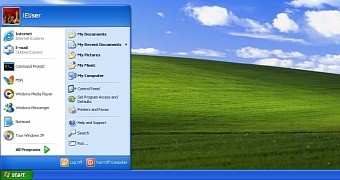Since Windows 10 is offered as a free upgrade for users who are running genuine Windows 7 or 8.1 on their computers, it’s pretty clear that these systems can run the new operating system flawlessly, but the big question for some users is how well the new software will work on old hardware designed for Windows XP or Vista.
Considering that Windows XP was launched 14 years ago, it’s not such a shocking thing that installing Windows 10 on a computer that shipped with the ancient OS takes longer than expected or doesn’t work at all, but fortunately, it turns out that, in some cases, it actually runs pretty smoothly.
“You may purchase Windows 10 from the Microsoft Store or other retailers and install it on your existing device running Windows XP or Windows Vista if your device meets the minimum spec requirements for Windows 10. You will need to back up any existing files before installing Windows 10. It will be a ‘clean’ install. However, we recommend you experience Windows 10 on a newer device,” Microsoft explains.
System requirements
So Microsoft says that it might be possible to run Windows 10 on an XP or Vista computer, but what about hardware requirements?
Below are the system requirements of Windows XP:
| Processor | Pentium 233-megahertz (MHz) processor or faster (300 MHz is recommended) |
|---|---|
| RAM | At least 64 megabytes (MB) of RAM (128 MB is recommended) |
| HDD space | At least 1.5 gigabytes (GB) of available space on the hard disk |
| Graphics | Video adapter and monitor with Super VGA |
| Display | 800 x 600 pixel resolution or higher |
And these are the system requirements of Windows Vista:
| Processor | 800-megahertz (MHz) 32-bit (x86) processor or 800-MHz 64-bit (x64) processor |
|---|---|
| RAM | 512 megabytes (MB) of system memory |
| HDD space | 20-gigabyte (GB) hard disk that has 15 GB of free hard disk space |
| Graphics | DirectX 9-class graphics card |
| Display | 32 MB of graphics memory |
And finally, here are the Windows 10 system requirements:
| Processor | 1 gigahertz (GHz) or faster processor or SoC |
|---|---|
| RAM | 1 gigabyte (GB) for 32-bit or 2 GB for 64-bit |
| HDD space | 16 GB for 32-bit OS 20 GB for 64-bit OS |
| Graphics | DirectX 9 or later with WDDM 1.0 driver |
| Display | 1024x600 pixel resolution or higher |
Conclusion
Not to mention that, for some specific features, hardware upgrades are required anyway, so if you really want to make the most of Windows 10, just give up on the old computer and get a new one that should be good to go for at least 10 years from today.

 14 DAY TRIAL //
14 DAY TRIAL //